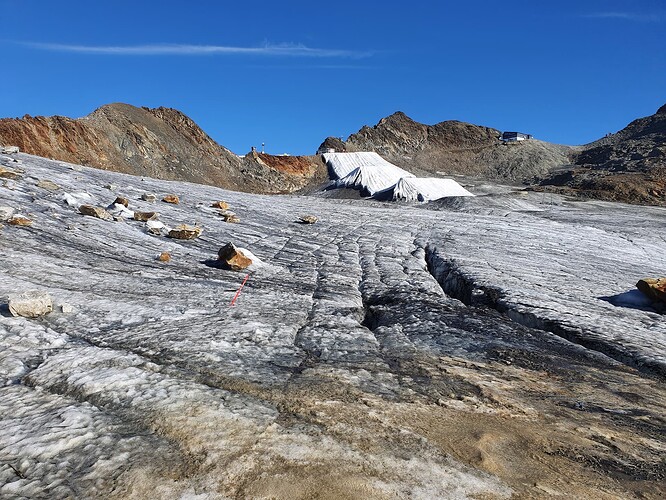This came to me while on a hike recently, and I think I’m ready to add in some images and then ask others to do so before proposing.
The bottom four values are still very focused on popular paths, the fifth is entering what can be common regionally, and the sixth is very specific. I don’t think that having values 5 and 6 somehow make it unusable for people only interested in the first 3-4 values, and it remains far less lopsided than SAC. I feel like adding another value on foot_scale makes a lot more sense than having essentially a one value scale for more technical scrambling.
Perhaps value six should be semi_technical_scrambling, but that’s a mouthful.
@Hungerburg can you tell me what countries in Europe print T5 and T6 on maps? I think having this be a rarely used value helps break it apart from more commonly occurring scrambling while still respecting some countries (and hence users) expectations for what constitutes a path.
Value 5: Simple Scrambling
More vertical terrain where hands are used to climb/scramble, but is simpler than technical climbing=*
foot_scale=simple_scrambling
Large obstacles or slopes that are steep enough they need to be “climbed” but are simpler than technical climbing=*in which use of safety equipment like a rope and harness are recommended. Hand and footholds should be fairly large, obvious, and sturdy. Your feet are off of level ground for more than a few moves and you need to move from handhold to handhold for an extended period of time.
Expectations:
- Accessibility: You need to be able to pull up your body weight with upper body strength. While not considered “technical climbing” significant risk can be involved. Previous climbing or mountaineering experience is recommended though not necessary.
- Focus: Loss of focus can have lead to serious or fatal consequences.
- Footwear: Something a bit technical is recommended. You’ll generally want something more traditional with “structure” or a lightweight shoe that conforms to the foot for better feel and independent use of foot muscles for control.
Roughly equivalent to local scales:: Class 3 YDS, NFS Class 1 Trails, SAC T4-5, CAI EE, AWTGS 4-6?, PWS T3-R?, BMC Grade 1.
Value 6: Technical Scrambling
This overlap the lower end of technical climbing=* though often done without rope
foot_scale=technical_scrambling
There is often little to no sign of being a proper “path”, though it is a route that people have done before. Such terrain overlaps into UIAA I-II and YDS 5.5 difficulty.
Most countries don’t consider this to be a path - in the US formal (official & maintained) routes generally end at simple_scrambling, though it’s possible to find informal or social “use trails” that get into this terrain. Many countries in Europe will not print SAC T5 or T6 routes on maps. The United Kingdom, Austria, and ??? are places where such terrain is considered within the scope of a path.
Expectations:
- Accessibility: You should be comfortable with technical climbing before attempting to free solo.
- Focus: Loss of focus can have lead to serious or fatal consequences.
- Footwear: Something specifically designed to be used for climbing is highly recommended.
Roughly equivalent to local scales:: Class 4 YDS, Bouldering VB, SAC T5-6, UAII 2, Austria “Alpine Route”, CAI EE, AWTGS 4-6?, PWS T3-R?, BMC Grade 2-3


